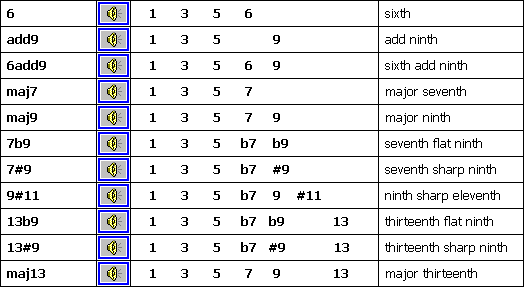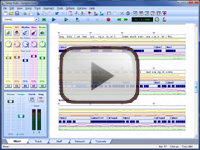
Most ChordWizard products use the concept of required degrees in the definitions of chord types. Required degrees of a chord type must be present in a group of notes for them to be identified as a chord of that type.
The required degrees of the standard chord types are carefully chosen. For example, the 7♯9 chord type has ♯9 as a required degree.









